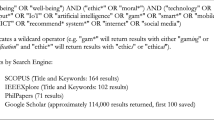Abstract
Cyberspace and cyberpower are terms that are increasingly used in common parlance, but are notoriously difficult to define and measure. This article builds on previous work defining the properties of cyberspace in terms of vertical layers, which when combined with a representation of distance presents a three-dimensional model. The unique attributes of cyberspace can be harnessed for power projection, the aim of which is ultimately to alter the behaviour of individuals. Although cyberspace has yet to be used as a medium to demonstrate conventional hard power of coercion and threats supported by physical force, it does present a suitable medium for the projection of soft power of attraction and imitation. These are defined within the context of the online environment and by drawing on the techniques used to optimise Web-based commerce, potential methods of implementing and measuring the success of a campaign of cyberpower projection are proposed.

Similar content being viewed by others
References
Barwinski, M. (2005) Taxonomy of Spyware and Empirical Study of Network Drive-by-Downloads. Monterey, CA: Naval Postgraduate School.
Bastardi, A., Uhlmann, E.L. and Ross, L. (2011) Wishful thinking: Belief, desire, and the motivated evaluation of scientific evidence. Psychological Science 22(6): 731–732.
BBC News. (2002) EU agrees Zimbabwe sanctions. 18 February, http://news.bbc.co.uk/1/hi/world/africa/1827827.stm, accessed 4 February 2015.
Cha, M., Haddadi, H., Benevenuto, F. and Gummadi, K. (2010) Measuring user influence in twitter: The million follower fallacy. Proceedings of the Fourth International AAAI Conference on Weblogs and Social Media, AAAI Press, Menco Park, CA.
Concho, C. (2004) Radio propagation during World War II. http://web.stanford.edu/class/e297a/WAR%20PROPAGANDA.htm, accessed 4 February 2015.
Dahl, R. (1957) The concept of power. Behavioral Science 2(July): 202.
Department of Defense. (2007) Joint Publication 1-02 Dictionary of Military and Associated Terms.
Development, Concepts and Doctrine Centre. (2013) Joint Doctrine Note 3/13. Ministry of Defence, UK.
Fuchs, C. (2012) Behind the news. Social media, riots and revolutions. Capital and Class 19(3): 383.
Gassen, G. and Gerhards-Padilla, E. (2012) Current botnet-techniques and countermeasures. Praxis der Informationsverarbeitung und Kommunikation 35(1): 3–10.
Google Analytics. (2014) http://www.google.com/analytics, accessed 2 September 2014.
Greenwald, T. (2010) The soft-power fallacy. Commentary January.
Hall, I. and Smith, F. (2013) The struggle for soft power in Asia: Public diplomacy and regional competition. Asian Security 9(1): 1–18.
House of Lords Select Committee on Soft Power and the UK’s Influence. (2014a) Report of Session 2013–14. Persuasion and Power in the Modern World, HL Paper 150, London: The Stationery Office, March, pp. 33–53.
House of Lords Select Committee on Soft Power and the UK’s Influence. (2014b) Oral and Written Evidence. Report of Session 2013–14, Persuasion and Power in the Modern World, HL Paper 150, London: The Stationery Office, March, Vol 1. p. 122.
Jegatheesan, S. (2013) Cookies – Invading our privacy for marketing, advertising and security issues. International Journal of Scientific and Engineering Research 4(5): 3.
Kent, M., Carr, B., Husted, R. and Pop, R. (2011) Learning web analytics: A tool for strategic communication. Public Relations Review 37(5): 536–543.
Kroenig, M., McAdam, M. and Weber, S. (2010) Taking soft power seriously. Comparative Strategy 29(5): 412–431.
Lister, C. (2014) Profiling the Islamic state. The Brookings Institution, http://www.brookings.edu/~/media/Research/Files/Reports/2014/11/profiling%20islamic%20state%20lister/en_web_lister.pdf, accessed 5 February 2014.
Ministry of Defence. (2013a) Cyber Primer. Development, Concepts and Doctrine Centre, UK pp. 1–22.
Ministry of Defence. (2013b) New cyber reserve unit created. 29 September, https://www.gov.uk/government/news/reserves-head-up-new-cyber-unit, accessed 5 August 2014.
NATO Parliamentary Assembly. (2009) NATO and cyber defence, http://www.nato-pa.int/default.asp?SHORTCUT=1782, accessed 5 August 2014.
Nye, Jr, J.S. (1991) Bound to Lead: The Changing Nature of American Power. Canada: Basic Books.
Nye, Jr, J.S. (2004) Power in The Global Information Age. Oxon, UK: Routledge, p. 90.
Nye, Jr, J.S. (2008) Public diplomacy and soft power. The Annals of the American Academy of Political and Social Science 94(1): 109.
Nye, Jr, J.S. (2009) Get smart. Combining hard and soft power. Foreign Affairs July/August. http://www.foreignaffairs.com/articles/65163/joseph-s-nye-jr/get-smart?page=1, accessed 3 September 2014.
Nye, Jr, J.S. (2010) Cyber power. Harvard Kennedy School, May, http://belfercenter.ksg.harvard.edu/files/cyber-power.pdf, accessed 27 October 2013, p. 2.
Open Net Initiative. (2014) https://opennet.net/, accessed 3 September 2014.
Rid, T. (2011) Cyber war will not take place. Journal of Strategic Studies 35(1): 6.
Rid, T. (2012) Cyber-weapons. The RUSI Journal 157(1): 6–13.
Sheldon, J. (2011) Deciphering cyberpower. Strategic Studies Quarterly (Summer): 98.
Sullivan, B. (2015) Anonymous #OPIsis attackers take down ISIS twitter accounts, http://www.techweekeurope.co.uk/security/cyberwar/anonymous-isis-hack-161671, accessed 19 February 2015.
Talbot, D. (2008) How Obama really did it. Technology Review Sep/Oct.
Tellis, A., Bially, J., Layne, C. and McPherson, M. (2000) Measuring National Power in the Post Industrial Age. Santa Monica, CA: Rand, p. 5.
Treverton, G. and Jones, S. (2000) Measuring national power, RAND national security research division, http://www.rand.org/content/dam/rand/pubs/conf_proceedings/2005/RAND_CF215.pdf, accessed 5 August 2014.
Tsikerdekis, M. and Zeadally, S. (2014) Online Deception in Social Media, Library and Information Science Faculty, Paper 12, University of Kentucky UKnowledge.
Twitter Analytics. (2014) http://www.analytics.twitter.com, accessed 2 September 2014.
Whitehead, T. and Evans, M. (2014) Passengers learn of bomb scare on twitter. The Telegraph 6 August.
Author information
Authors and Affiliations
Corresponding author
Rights and permissions
About this article
Cite this article
Venables, A., Shaikh, S. & Shuttleworth, J. The projection and measurement of cyberpower. Secur J 30, 1000–1011 (2017). https://doi.org/10.1057/sj.2015.35
Published:
Issue Date:
DOI: https://doi.org/10.1057/sj.2015.35




